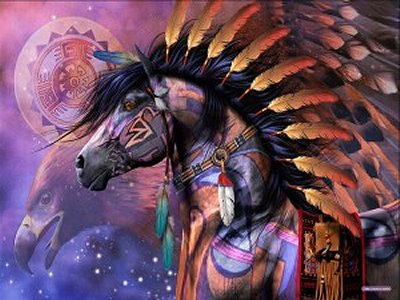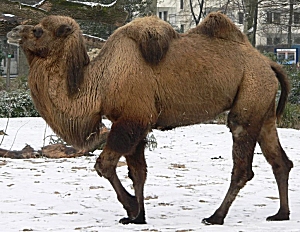 |
SPIRIT
LODGE
LIBRARY
Totem
Animals
Page
24
|
(Main
Links of the site are right at the bottom of the page)
Some of the links for the 197 pages in this Totem Animals section
are below. For the rest please go HERE
CAMEL MEDICINE
By CinnamonMoon

Animal-Wise/Ted Andrews:
Keynote: replenishment; surviving during parched times and journeys.
The camel is traditionally considered a relative of the ancient
dragons and other winged serpents.
In the Zohan, the serpent in the Garden of Eden is described
as a kind of "flying camel" and
similar allusions are found in ancient Persia, but not all of
the references are negative ones.
The camel is a desert animal of Asia and Africa that is primarily
used for transportation and
journeys because of its ability to travel great lengths with
little water. The appearance of the
camel is often a reminder that the journey ahead may be difficult,
but we will be able to survive
it and we will have the "waters" necessary to complete
the journey successfully.
With long eyelashes to protect its eyes from wind-blown sand,
camels are well equipped for life
upon the desert. Their nostrils close easily and their broad
feet enable them to walk over the
sand's shifting surfaces. A camel sweats very little, thus retaining
water. When the camel is a
totem, we are able to accomplish and succeed in environments
that often amaze others and
ourselves. It is a reminder that although the sands may be shifting
around us, we will have the
ability to remain steady amidst them.
Camels can drink 53 gallons of water at a time. This is the
equivalent of 440 lbs. of water per
day. The water they drink passes directly from the stomach into
body tissues. On the desert, they
will get water from desert plants, but they can go on a dry
diet for several weeks. A camel may
lose one fourth of its body weight in water without showing
any distress.
The camel stores fat in its hump, which is essential for it
to go for such great periods of time. The
hump is also full of hydrogen atoms. As the camel breathes in
oxygen, the oxygen combines with
the hydrogen atoms to make H20 (water). The hump can weigh as
much as 100 pounds, and is a
reservoir of energy, a reminder that our own energy reservoir
is greater than we may believe.
Camels also have a high degree of endorphin activity. Endorphins
are released in the body during
times of exercise, creating a kind of natural high or sense
of "euphoria." Those with camels as
totems have a wonderful ability to remain positive amid the
harshest of times and experiences.
Theirs is the innate philosophy of "the glass is half full."
Camels sleep in 3-minute spans of time and for a total of only
20 minutes per night. Camel
people often have unusual sleep habits. Individuals who learn
to use "power naps" often have
camel or an animal with similar sleeping abilities as part of
their totem shield.
When the camel appears, the journey may become difficult, but
we will have all that we need to
complete it successfully. It is a sign that we will be replenished
and the journey will be
successful. The way may be difficult and the world may seem
to shift around us, but if we
remain positive, all will work out for us. We will accomplish
what others would find impossible.
Arabian/Dromedary Camel: one hump
Asiatic/Bactrian Camel: two humps
2Crow Woman:
Camel/Dromedary's Wisdom Includes:
Learning to walk in the shifting sands of time
Understanding the vastness of space
Ability to save for future use
Understanding the value of water as a life force
Transforming the burdens we carry
~animalspirits
|
Libraries
are on this row
|
|
|
INDEX
Page 3
(Main Section, Medicine Wheel, Native Languages &
Nations, Symbology)
|
|
INDEX
Page 5
(Sacred Feminine & Masculine, Stones & Minerals)
|
|
|
|
|
|
©
Copyright: Cinnamon Moon & River WildFire Moon (Founders.)
2000-date
All rights reserved.
Site
constructed by Dragonfly
Dezignz 1998-date
|
|